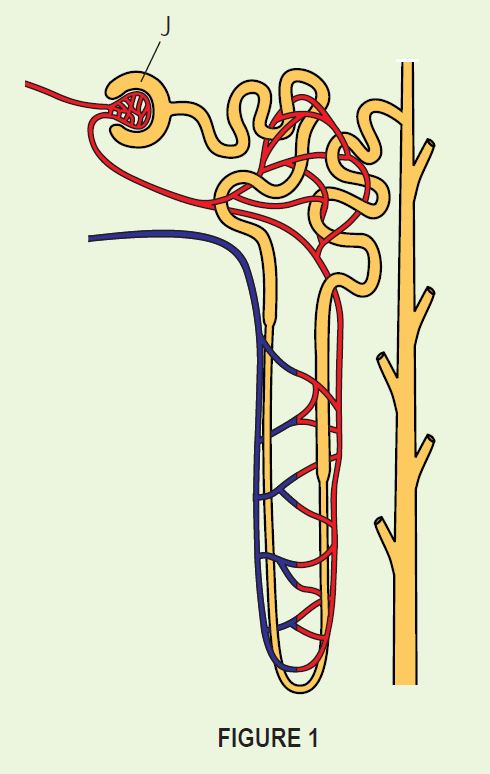(a) A patient suffered a disease that required the pancreas to be removed. Explain the effect of removing the pancreas on the production of enzymes and hormones, and subsequently on digestion and blood glucose levels in the individual.
(b) What advice can be given to the patient to help him deal with the health problems caused by the removal of his pancreas?
Answer:
(a)
• Absence of lipase. This means less fat digestion.
• Absence of trypsin. This means less protein digestion.
• When insulin and glucagon are not produced, the regulation of blood sugar level is affected.
(b)
• Reduce the intake of carbohydrates
• Get an insulin injection if the blood glucose level rises above normal.
Figure 1 shows the structure of a nephron and collecting duct.

(a) Name the process that happens in J.
(b) Name two substances that are not filtered out through the glomerulus.
(c) Explain how the process you named in (a) occurs.
(d) Explain why the fluid flowing in the loop of Henle does not contain glucose even though glucose is present in Bowman’s capsule.
(e) Mammals have different kidney structures depending on the presence of water in their habitats. The concentration of urine produced depends on the length of the loop of Henle. The longer the loop of Henle, the higher the salt concentration in the fluid surrounding the loop of Henle. Based on this information, what can you predict about the loop of Henle in animals living in a humid environment compared to animals living in a dry environment?
Answer:
(a)
Ultrafiltration
(b)
Blood cells and plasma protein
(c)
The diameter of the afferent arteriole that carries blood into the glomerulus is larger than the diameter of the efferent arteriole that carries blood out of it. This creates a high hydrostatic pressure in the glomerulus, and pushes molecules of specific sizes such as glucose and amino acid out across a two-cell thick wall between the capillary wall and the inner wall of the Bowman capsule.
(d)
Glucose was reabsorbed in the proximal convoluted tubule through active transport.
(e)
Animals that live in a dry environment have a longer loop of Henle compared to animals living in a moist environment. This enables more water to be absorbed through the loop of Henle. The result is concentrated urine.